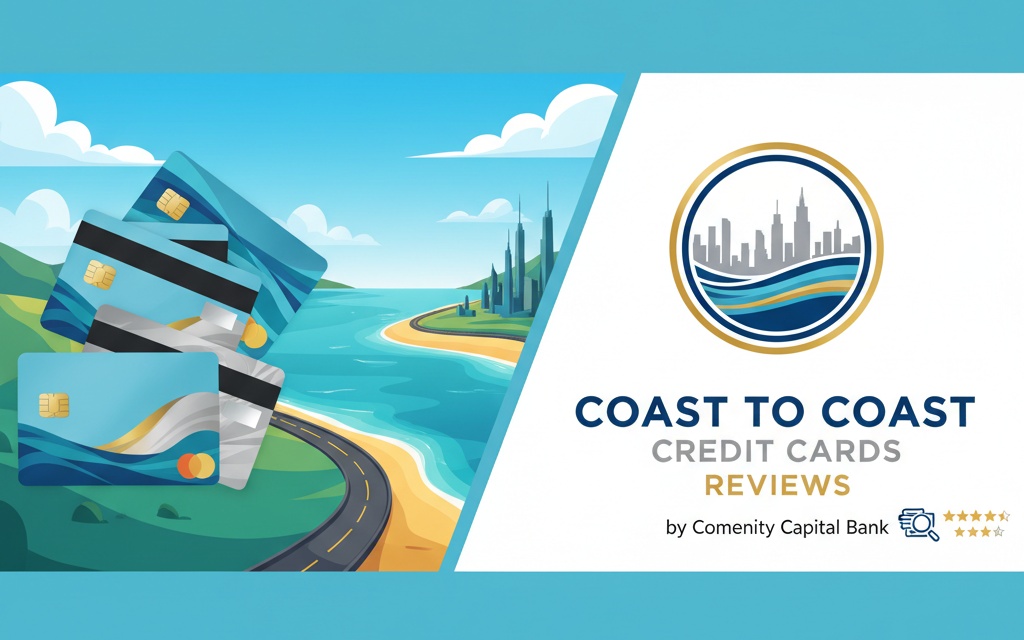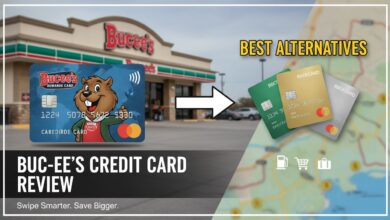Coast to Coast Credit Cards Reviews – By Comenity Capital Bank 2025

The Coast to Coast credit card, often branded as the Coast to Coast Visa Signature card, is issued through Comenity Capital Bank in partnership with Barclaycard. It’s a rewards-style credit card that offers benefits for everyday purchases, but it’s not as widely known as cards from major banks. In this review, we’ll cover its perks, drawbacks, fees, user experiences, and whether it’s worth adding to your wallet.
Disclaimer: This article is for informational purposes only. Credit card terms, rates, and features can change at any time. Always review the most recent details directly from the issuer before applying. This is not financial advice—if you have unique financial needs, speak with a qualified advisor.
What Is the Coast to Coast Credit Card?
The Coast to Coast credit card is a Visa Signature product that aims to give users a straightforward rewards program and solid everyday usability. It’s not a major national brand like Chase or Citi, but rather a smaller program managed through Comenity, a bank known for retail and co-branded cards.
The card uses the daily balance method for interest calculation, which is common and fairly transparent. It also includes standard Visa Signature protections, meaning it’s accepted nearly everywhere Visa cards are.
Key Features and Perks
When considering any credit card, the real question is: what’s in it for you? Here’s what stands out with the Coast to Coast credit card.
1. Rewards Program
The card offers a rewards structure where cardholders earn points on purchases. The exact point rates may vary depending on the current offer, but typically, Visa Signature cards let you redeem points for things like:
- Merchandise or gift cards
- Travel and experiences
- Cash back or statement credits
If you use your card regularly and pay off your balance monthly, you could see decent value from these rewards.
2. Security and Fraud Protection
The card comes with built-in Visa protection features. That includes fraud monitoring and zero-liability coverage if your card is lost or stolen. For most users, this means you won’t be held responsible for unauthorized charges.
3. Global Acceptance
Because it’s a Visa Signature card, it’s accepted in millions of locations worldwide. Whether you’re shopping locally or traveling, you can expect it to work anywhere Visa is supported.
4. Transparency in Interest Calculations
The daily balance method for interest calculation is easy to understand. It calculates interest based on the balance you carry each day, not just the statement period total. This makes it easier to track how much interest you’re paying if you ever carry a balance.
5. Visa Signature Benefits
Being part of the Visa Signature network also provides access to benefits like travel assistance, concierge services, and purchase protection, depending on your card’s terms.
Pros of the Coast to Coast Credit Card
Let’s highlight what makes this card appealing.
- Reward Potential: The ability to earn points for everyday purchases is great if you spend strategically and pay off balances.
- Standard Fraud Protection: The Visa network provides reliable fraud protection, which is essential for peace of mind.
- Transparent Interest Calculation: You know exactly how your interest is determined, which helps with budgeting.
- Visa Signature Access: You get access to premium Visa benefits without necessarily needing a high-end travel card.
Cons of the Coast to Coast Credit Card
No card is perfect. Here’s what to keep in mind before applying.
- Limited Public Details: The rewards structure and specific redemption options aren’t always clearly listed. You may need to read the fine print carefully or contact customer service.
- Possible High APR: Like most rewards cards, this one might come with a higher interest rate. If you carry balances, the interest could cancel out your rewards.
- Not Widely Known: Since it’s not a mainstream card, you won’t find a ton of reviews or discussions online. That makes it harder to gauge real-world performance.
- Potential for Changing Terms: Smaller issuers sometimes adjust benefits or rewards without much notice. Keeping an eye on updates is important.
Eligibility and Application Tips
If you’re considering applying, here’s what you should know:
- You’ll likely need fair to good credit.
- Your approval odds improve if you have a clean credit report, steady income, and a low debt-to-income ratio.
- If your credit score is below 670, you might still qualify, but with a smaller credit limit or higher APR.
Before applying, check your credit score and make sure you have no outstanding collections or missed payments.
Comparing the Coast to Coast Card to Other Options
To see where this card fits, let’s compare it with a few common alternatives.
Mainstream Rewards Cards
Big-name cards like Chase Freedom or Citi Custom Cash often offer higher reward rates and welcome bonuses. However, they also tend to require excellent credit and come with stricter approval criteria.
Cash Back Cards
If you prefer simplicity, a flat-rate cash back card might make more sense. Instead of earning points, you earn a fixed percentage back on every purchase—often easier to manage.
Travel Rewards Cards
Frequent travelers may prefer cards that earn airline miles or hotel points. Those cards typically come with annual fees but also provide perks like travel insurance, airport lounge access, and no foreign transaction fees.
Low APR Cards
If your goal is to carry a balance and minimize interest, look for a low APR or balance transfer card instead of a rewards card.
In short, the Coast to Coast card might be a good middle-ground option if you want rewards but don’t need luxury travel perks.
User Experiences and Reviews
There aren’t many public reviews for the Coast to Coast credit card, which makes sense given its limited visibility. However, Comenity and Barclaycard, the banks behind it, have a mixed reputation in online forums.
Positive comments often mention easy online account management and consistent reward tracking. On the other hand, some users report that customer service can be slow to resolve disputes or clarify reward details.
As with most smaller issuers, experiences can vary widely depending on how you use the card and how proactive you are in managing it.
Who Should Consider This Card
Ideal for You If:
- You pay off your balance in full each month.
- You want a simple, usable rewards card with solid Visa acceptance.
- You prefer moderate perks without a high annual fee.
- You don’t need complex travel benefits.
Probably Not for You If:
- You carry balances regularly.
- You want luxury-level travel perks or big sign-up bonuses.
- You dislike unclear or changing rewards programs.
- You want a card with thousands of online reviews to read through first.
How to Get the Most from the Coast to Coast Credit Card
If you do get approved, here’s how to make sure you’re getting maximum value:
- Pay your balance in full every month – this way, you enjoy rewards without losing money on interest.
- Use it strategically – focus on categories where you spend the most.
- Track your points – regularly check how many you’ve earned and how to redeem them.
- Watch for updates – reward structures and fees can change, so review your monthly statements.
- Redeem wisely – look for redemption options that give you the best value per point.
FAQs
Q: What credit score do I need to get approved?
A: You’ll likely need a score in the fair to good range—around 670 or higher. Approval depends on income, credit history, and other financial factors.
Q: Does the card have an annual fee?
A: Some versions of the Coast to Coast card do not charge an annual fee, but always confirm this before applying, since offers can change.
Q: Can I use the card internationally?
A: Yes. As a Visa card, it’s accepted worldwide. Just watch for any foreign transaction fees that might apply.
Q: How are interest charges calculated?
A: The Coast to Coast card uses the daily balance method, which calculates interest on the amount you owe each day.
Q: Is the rewards program worth it?
A: It depends on your spending habits. If you pay off your balance each month and use it regularly, the rewards can add up. But if you carry debt, interest charges will likely outweigh the benefits.
Q: What happens if the issuer changes the terms?
A: Like most credit cards, the issuer reserves the right to change rewards, fees, or other features. You’ll get notified, and at that point, you can decide to keep or cancel the card.
Conclusion
The Coast to Coast Credit Card can be a decent choice if you want a practical Visa Signature card with potential rewards and straightforward usage. It’s not a flashy, luxury card, but it delivers the essentials—fraud protection, everyday rewards, and broad acceptance.
However, because its reward rates and terms aren’t always easy to find, it’s important to read your offer carefully before signing up. For users who pay off balances monthly and enjoy earning points on regular purchases, this card could fit nicely into their financial routine.
If you prefer full transparency, stronger sign-up bonuses, or rich travel perks, you might find better value with other mainstream rewards cards.
Ultimately, the Coast to Coast credit card sits in the middle of the pack: practical, functional, and worthwhile—if you use it wisely.



